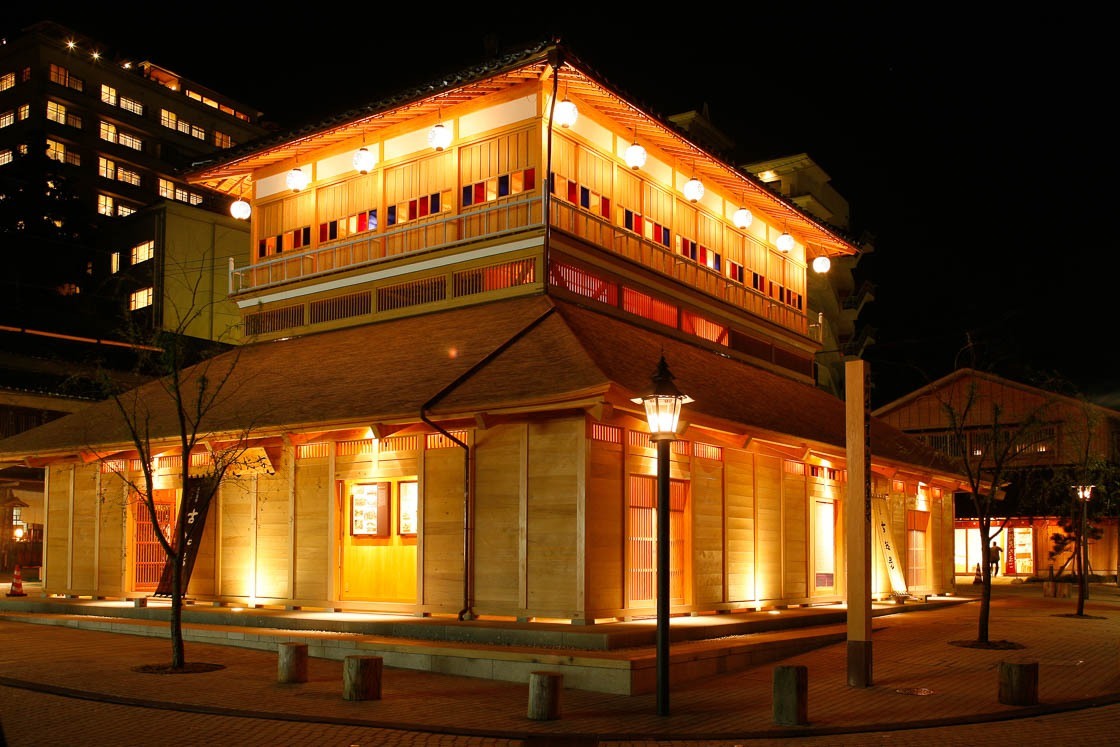Healing onsen waters that transcend time
Kaga Onsen-kyo is surrounded by the rich nature of the Hokuriku region and has a long and distinguished history. Among these, Yamashiro Onsen, which is said to have been in operation for 1,300 years, exudes a particularly elegant atmosphere. The Hokuriku Shinkansen bullet train line has been extended to Kaga Onsen Station, making it possible to visit this historic and cultural hot-spring resort in just 2 hours 40 minutes from Tokyo. It takes 1 hour 40 minutes from Kyoto and 2 hours from Osaka.
Yamashiro Onsen has a mystical legend that a wounded crow was healed by bathing in the hot spring water. The spa is deeply connected with the glamorous culture of Kutani ware and the scenic beauty that attracted writers and artists such as Akiko Yosano and Rosanjin Kitaoji, and welcomes you with its high-quality hot spring water and beautiful and delicious cuisine.
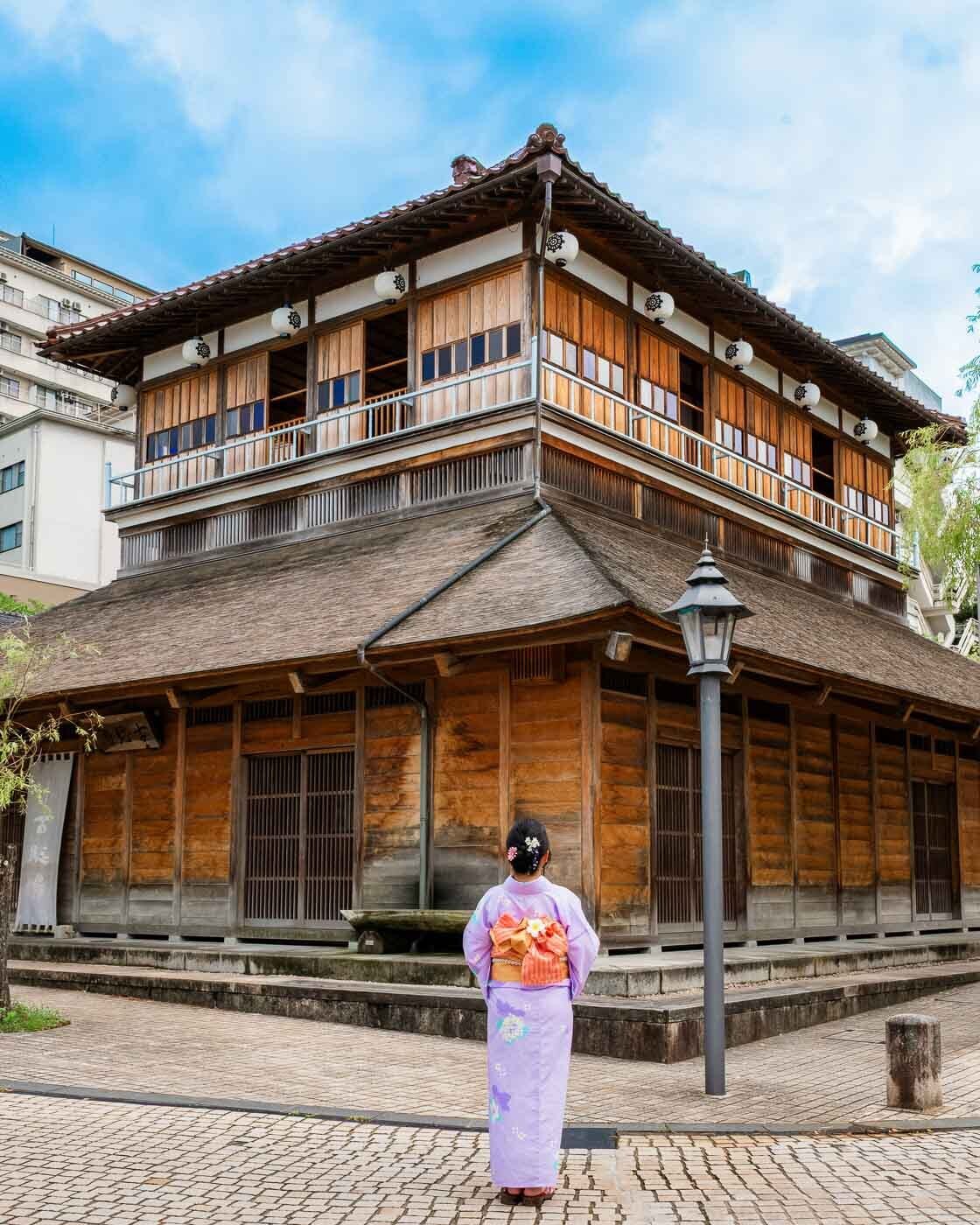
The history of the opening of the onsen - the natural hot springs guided by the god's servant Yatagarasu crow
The history of Yamashiro Onsen dates back to the Nara period (710-794). The legend of Yatagarasu, a three-legged crow, which is said to be a messenger of the gods, is an essential part of the story of the opening of the spa. According to the legend, when Gyoki Bodhisattva, a high priest of the Nara period (710-794), visited the site, he saw a crow with a wound on its wing healing itself by soaking in the hot spring water. Gyoki, seeing the scene, realized that this hot spring had a miraculous power to heal people from illness and fatigue, and opened it as a hot spring.
According to this legend, the Yatagarasu has been cherished as the guardian deity of Yamashiro Onsen. In the center of Yamashiro Onsen, there is a hot spring that is guarded by the Yatagarasu, and you can even drink the hot spring water. The Kosoyu communal bathhouse is tattoo friendly.
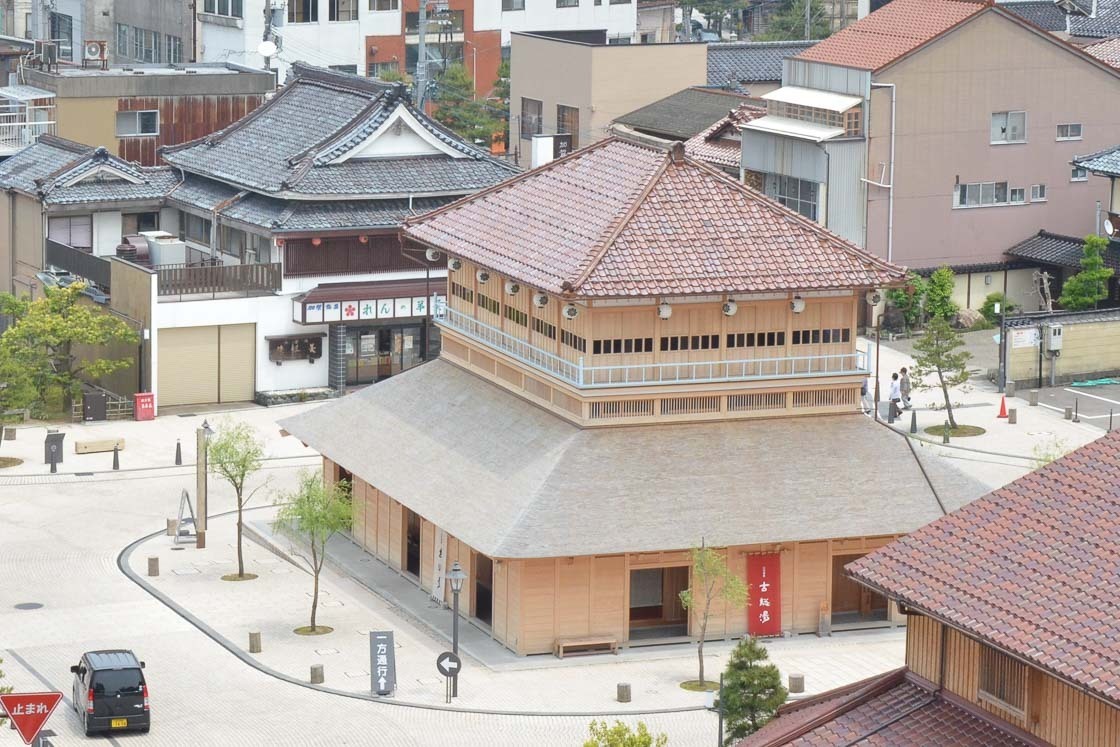
Development as a therapeutic bathhouse in the Kaga Domain
In the Edo period (1603-1867), the Kaga clan recognized the value of the hot springs in this area and protected it as an important therapeutic hot spring resort. Many people, including feudal lords, visited the area to enjoy the therapeutic waters, and the spa town gradually developed. The prototype of a hot spring resort was formed as inns were built to entertain the visitors. In addition, the development of roads and other measures made it easier for more people to visit Yamashiro Onsen and established its status as one of the leading hot spring resorts in the Hokuriku region.
A hot spring village rich in culture - Kutani pottery and the footsteps of writers and artists
Yamashiro Onsen is not only a therapeutic hot spring resort, but also a place where a rich culture has been nurtured. In particular, it has deep ties with Kutani Yaki porcelain, a type of gorgeous colored porcelain, and many writers and artists have loved the scenic beauty of the area and its hot spring baths.
During the Edo period, the Kaga Clan encouraged the production of Kutani ware as part of its efforts to promote industry. It is believed that the geographical proximity of Yamashiro Onsen to the Kutani pottery kilns and the high quality of the hot spring water healed the potters' minds and bodies, inspiring them to create new works of art. It is possible that the potters who visited the hot springs for a therapeutic bath were inspired by the beauty of nature and the warmth of the water during their stay, and created their own unique designs and techniques.
The hot spring resort area is dotted with Kutaniyaki galleries and stores, where visitors can view these beautiful works up close and personal. There is also a Kutani Pottery Museum in the neighborhood, where visitors can learn more about the history and artistry of Kutani Pottery. There are several Kutani pottery stores in Yamashiro Onsen. Why not visit and make a souvenir of your visit?
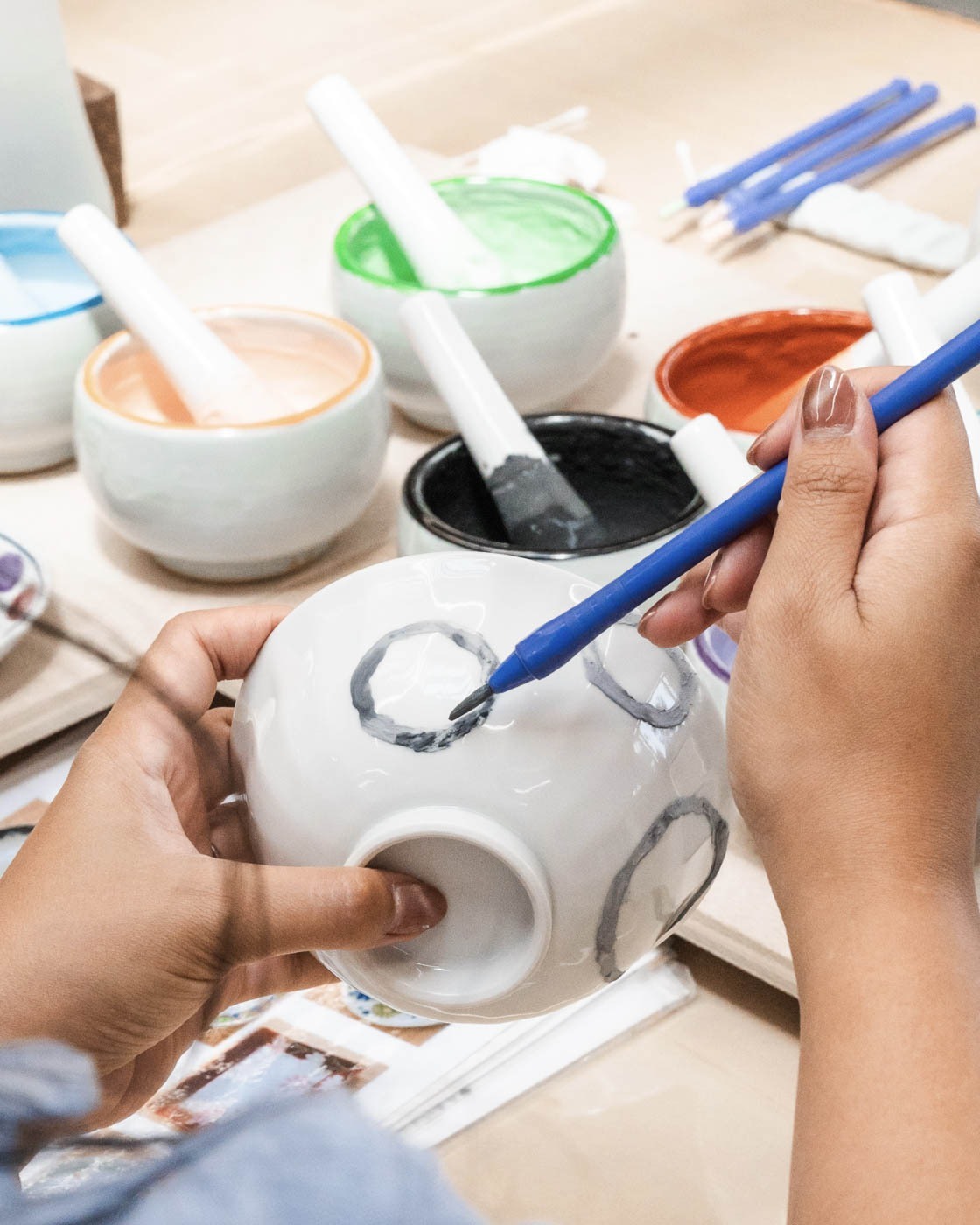
Hot springs loved by writers and artists - In the footsteps of Akiko Yosano and Rosanjin Kitaoji
From the Meiji period to the Showa period, many writers and artists, such as Akiko Yosano and Rosanjin Kitaoji, visited Yamashiro-Onsen, experiencing the scenic beauty, hot springs, and warmth of the people, and left numerous works. Yamashiro-Onsen became not only a hot spring resort, but also a place where art and culture flourished.
Akiko Yosano: A poet known for her passionate poetic style, stayed at Yamashiro Onsen. It is said that her sensitive sensibility was influenced by the nature and hot springs of Yamashiro.
Kitaoji Rosanjin: An artist and gourmet who was deeply impressed by the nature, food, and lifestyle of Yamashiro Onsen and developed a keen sense of beauty. The cuisine he would have enjoyed in Yamashiro may have influenced the present-day Yamashiro's food culture.
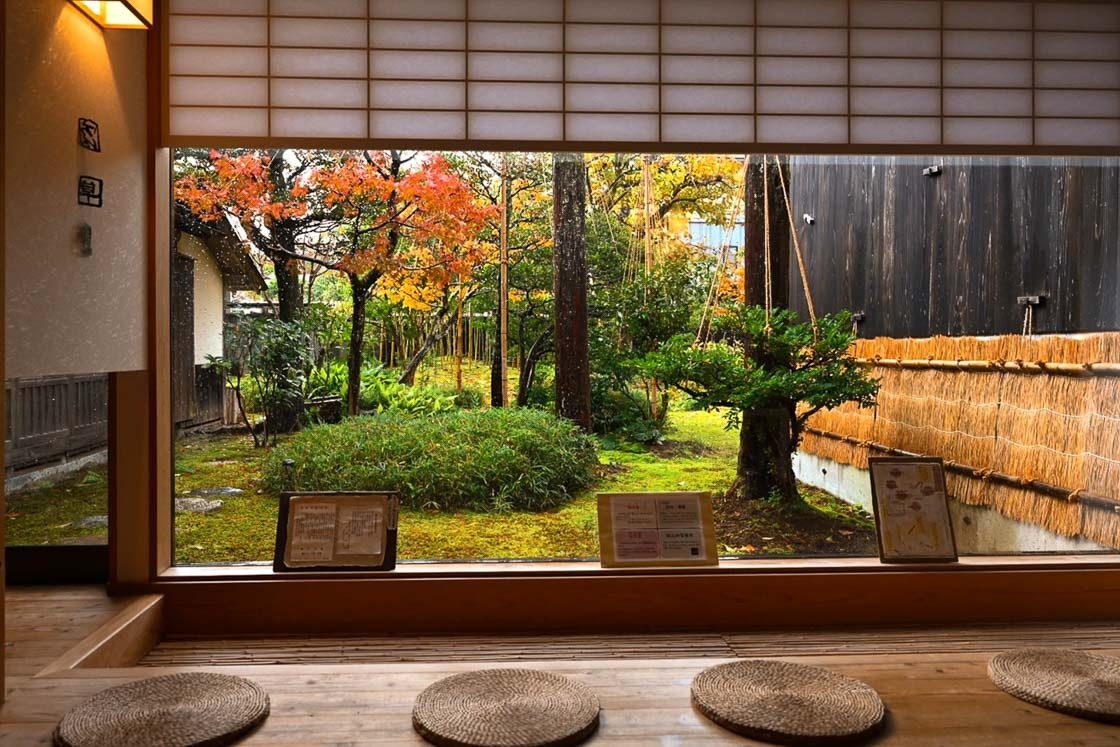
The unique landscape of the Yunogawa - Life around the public bathhouse
In the center of Yamashiro Onsen, there is a unique landscape called "Yunogawa" where inns, souvenir stores, and other facilities are arranged around a public bathhouse, and it tells the history of how people's lives have been shaped around hot springs. This unique landscape is proof of the deep connection between the hot spring and people's lives, and is an attraction unique to Yamashiro Onsen. Right in front of Kosoyu, there is an area with souvenir shops and restaurants called Hazuchiwo-gakudo, a long-established yokan jelly store, and local sweets stores. Enjoy strolling around while wearing a yukata to find a photogenic spot to post on social media!
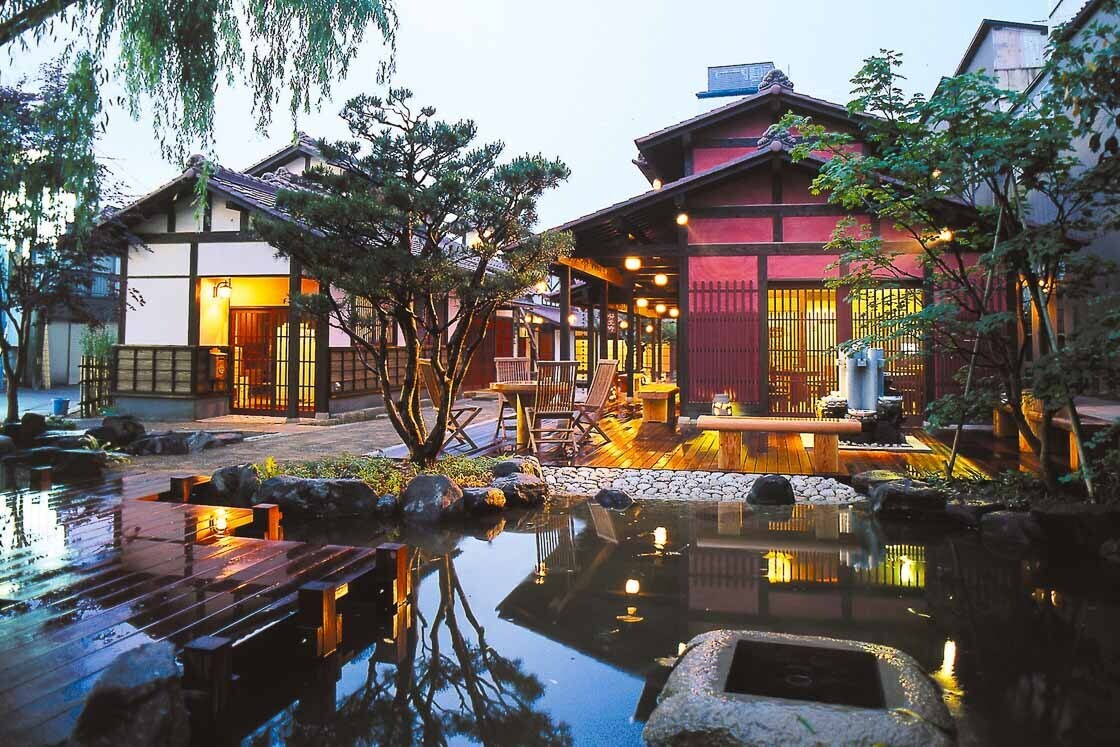
Soyu - A place for local residents and travelers to interact
Located in the center of Yunogawa, Soyu utilizes the gate of the former Yoshinoya Ryokan, a long-established inn, and aims to be a "public bathhouse that anyone can use comfortably", while maintaining the history and harmony with the streetscape of the Yunogawa area. It has become an essential part of the daily lives of local residents. It is also a place of rest and relaxation for visitors to the area. Local residents can be seen soaking in the hot water, relaxing from their daily fatigue, and socializing with each other. Casual conversation amidst the steam will make your trip even warmer.
Kosoyu - Relive the bathing experience of the Meiji era
Next to Soyu is Kosoyu, a reconstructed public bathhouse from the Meiji era. The rest area on the second floor and the Kutani ware tiles on the bathroom floor and walls have been restored to their original state. In the tattoo friendly Kosoyu bathhouse, the high ceilings and warm wooden interior make visitors feel as if they have stepped back in time. The layout of the bathtubs and the temperature of the water faithfully reproduce the atmosphere of those days. The area around the Yunogawa has nurtured a unique culture throughout its history, with many writers and artists visiting the area, and the townscape form and the appearance of days gone by can be said to be the original landscape of a Japanese hot spring resort itself.
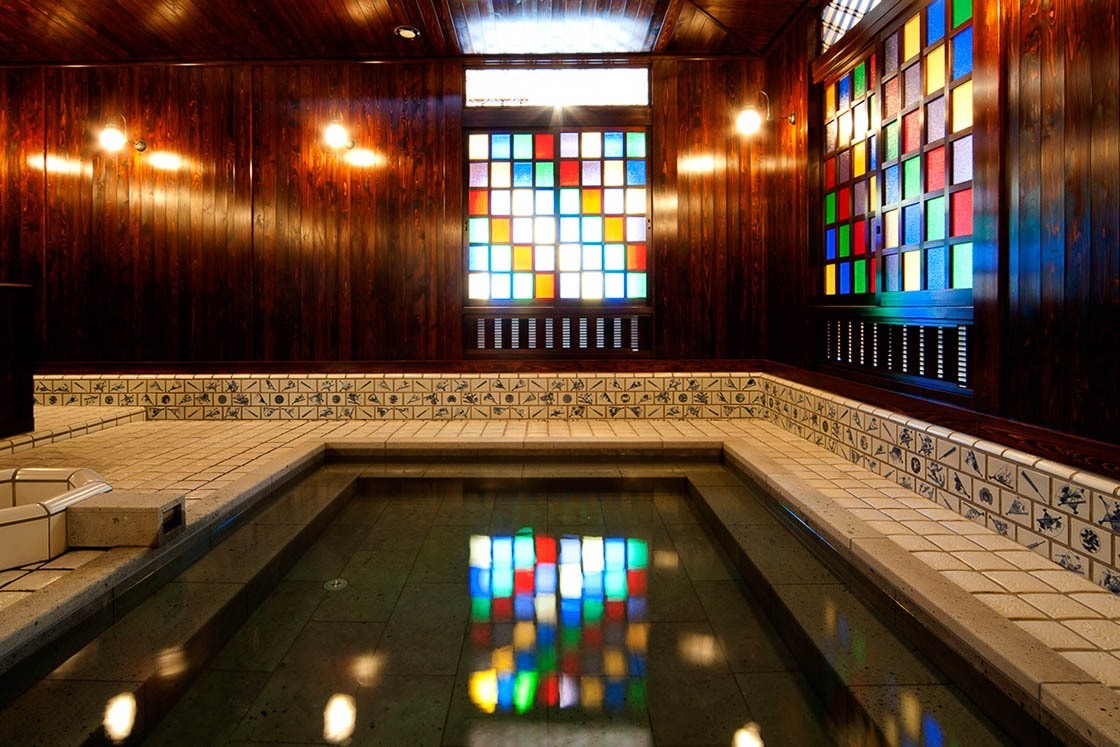
The bustle of Yunogawa - Scenery that adds to the atmosphere of a hot springs resort
The Yunogawa area is lined with long-established inns, souvenir stores, restaurants, and shops, creating an atmosphere of a hot springs resort. Before or after dusk, you can hear the daily conversations of tourists and locals selecting souvenirs after taking a bath. The area is bustling with activity unique to a hot spring resort. The Yunogawa is a space that concentrates the liveliness and charm of Yamashiro Onsen. At night, the lights of the Kosoyu are lit, creating a fantastic atmosphere that is different from that of the daytime.
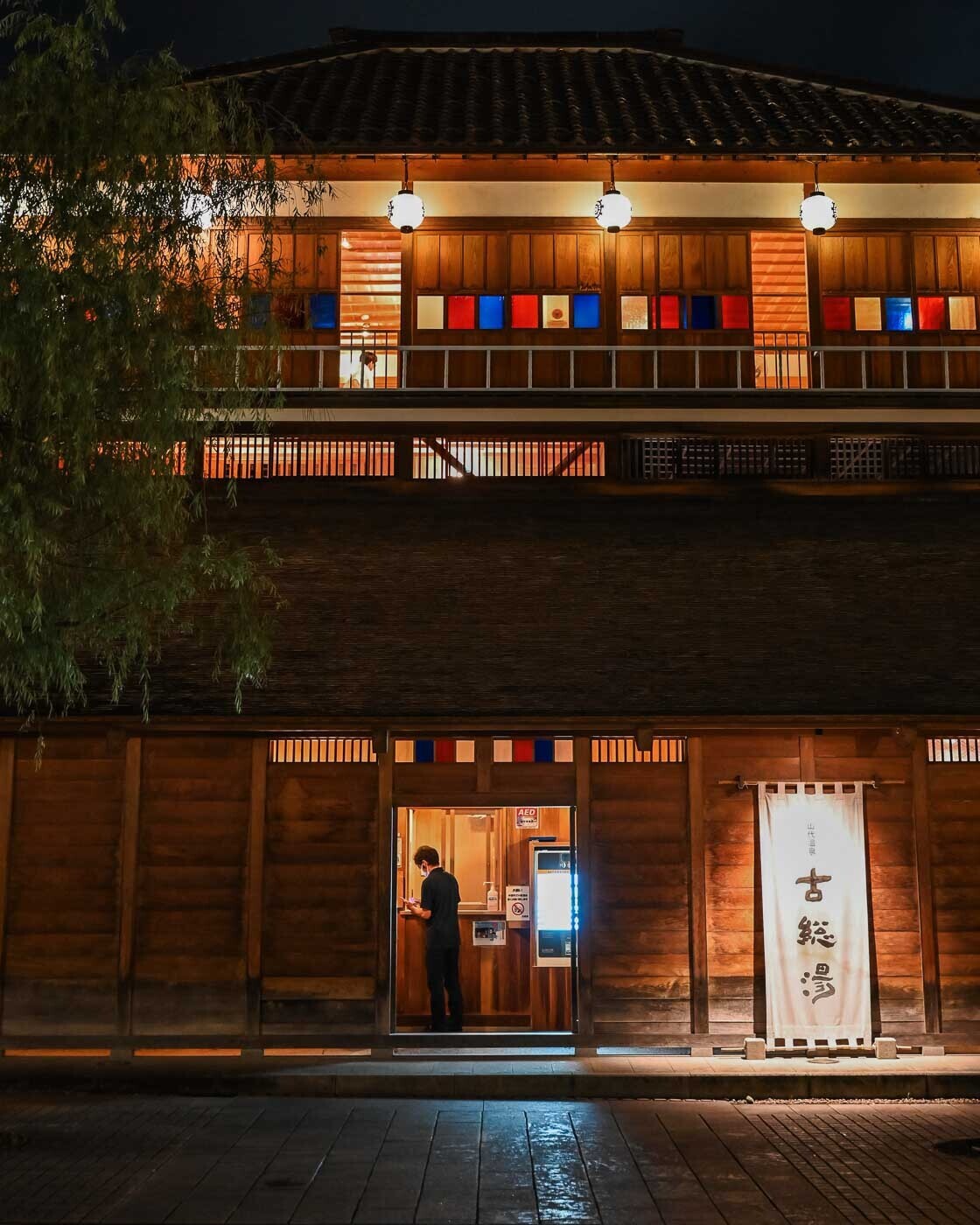
A blessing to heal body and mind - Enjoying the quality of the springs and the hot springs
The most attractive feature of Yamashiro Onsen is the high quality of its hot springs. In addition to its quality, which are said to be effective against neuralgia, muscular pain, and sensitivity to cold, another attraction of Yamashiro Onsen is the opportunity to enjoy a variety of unique hot spring baths. Soaking in the hot spring water will relieve daily fatigue and refresh your body and mind.
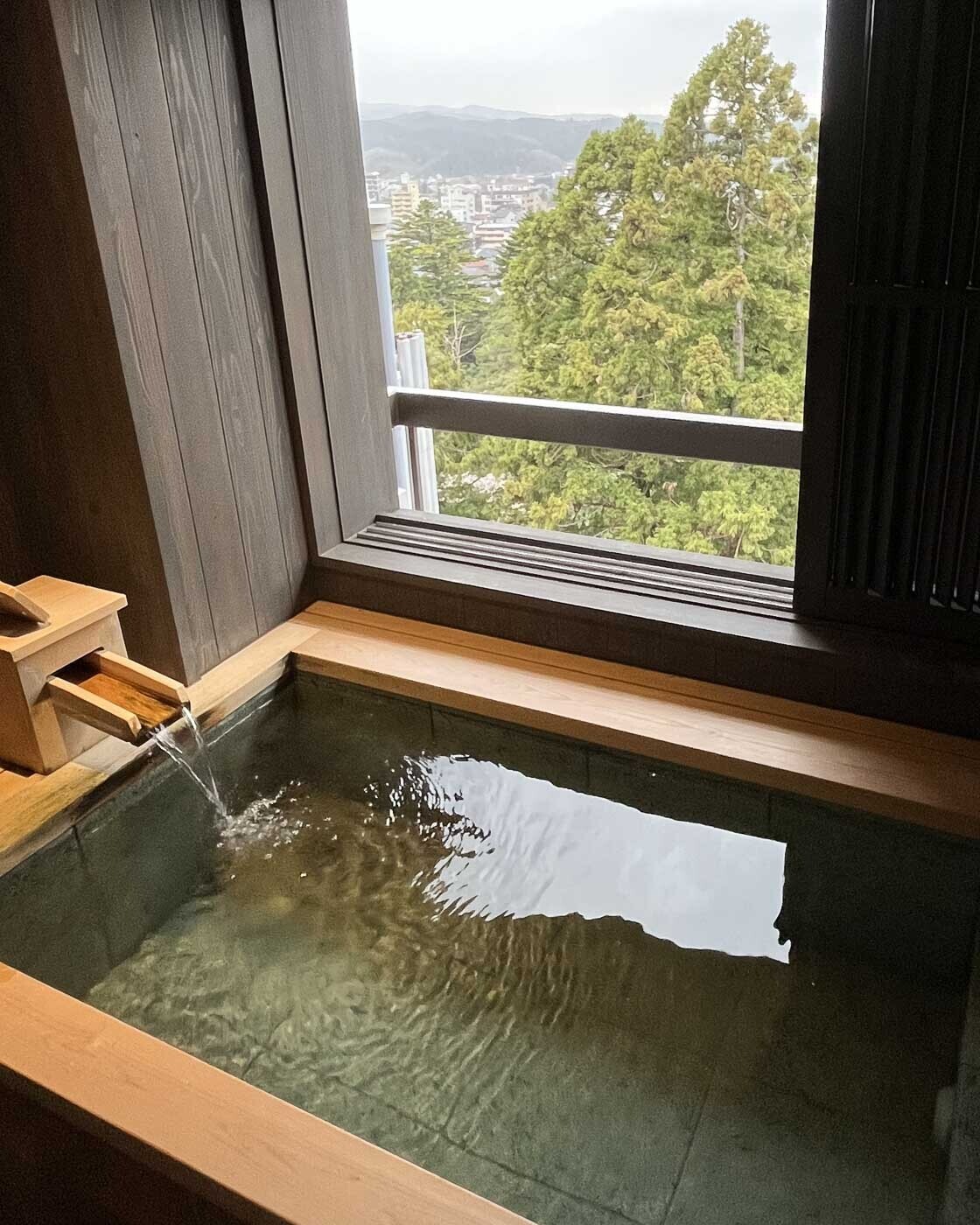
Sodium calcium sulfate spring - Moisturizing and warming hot water
Yamashiro Onsen has been popular as a hot spring for healing fatigue and wounds since the Nara period (1300 years ago). The spring is famous for its alkaline hot spring water containing sodium and calcium, which makes it very easy to bathe in. This spring water is gentle on the skin and leaves it moist and hydrated after bathing. It also has a high heat-retaining effect. It gradually warms a tired body, promotes blood circulation, and relieves muscle tension.
A variety of hot springs - Onsen at ryokan with rich individuality
In Yamashiro Onsen, there are many ryokan, each with its own unique hot spring. The seasonal views from the open-air baths, the elaborate designs of the indoor baths, and the luxurious hot spring water that flows from the source are just a few examples of the many unique features of each ryokan. Each ryokan offers a unique hot spring experience that will keep visitors coming back. In Yamashiro Onsen, the number of ryokan with open-air bath rooms has increased over the past few years, so you can enjoy a relaxing soak in the bath while admiring the scenery in your room. One of the best parts of visiting a hot spring is finding the best bath for you while feeling and smelling the different textures and fragrances of each bath.
Onsenji Temple and Hattori Shrine have watched over the town of Yamashiro
Yakuoin Onsenji Temple, located near the Yunogawa, is said to be the birthplace of the Japanese syllabary order A-I-U-E-O あ, い, う, え, お. Follow the staircase at the back of the temple grounds, where the plates "あ", "い", "う", and so on are buried.
The neighboring Hattori Shrine overlooks the town of Onsen. The wind rustling in the trees and the sacred silence will leave you feeling refreshed.
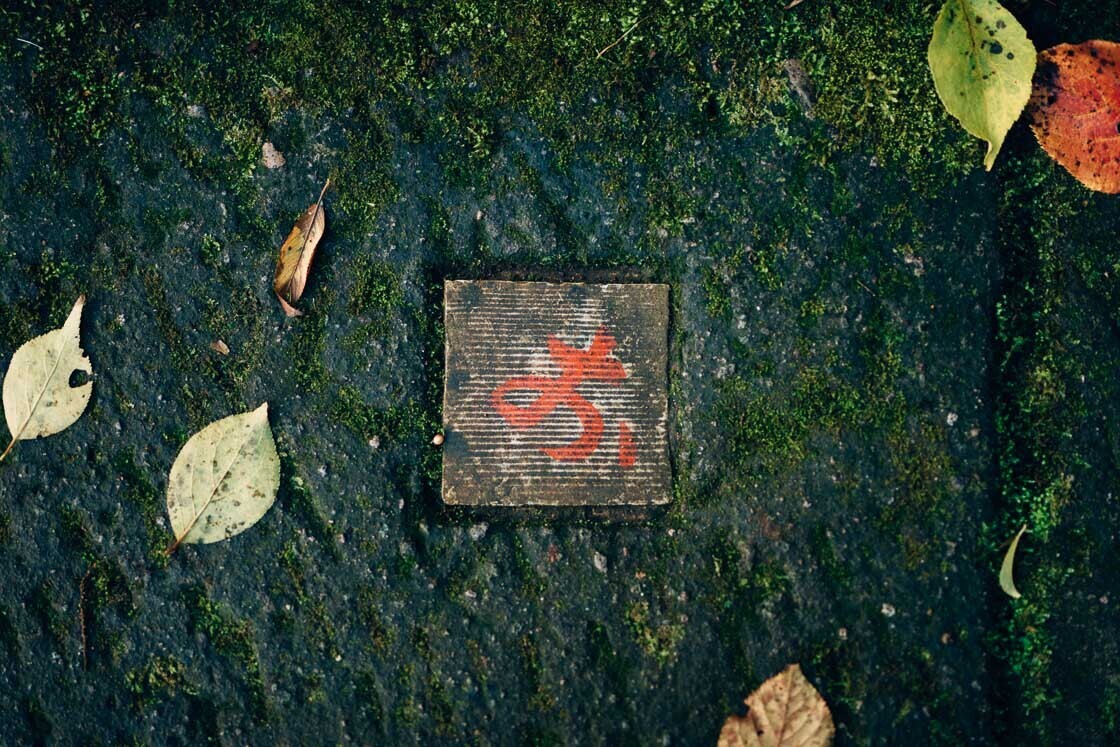
Natural blessings and food - Seasonal appeal and nourishment
Yamashiro Onsen offers more than just hot springs. The rich natural surroundings allow you to enjoy beautiful scenery in each of the four seasons. Another great pleasure of travel is the cuisine using fresh seafood from the Sea of Japan and ingredients grown in the rich land of Kaga region the southwestern area of Ishikawa Prefecture. The combination of hot springs and gastronomy will further enhance the satisfaction of your trip. While most ryokan offer a half-board plan, there are some that offer a plan without dinner. How about stopping by a traditional Japanese restaurant called kappo cuisine where you can choose the dishes you want to eat after soaking in the Soyu or Kosoyu baths or after strolling around the area? You can enjoy fresh and nourishing Kaga ingredients.
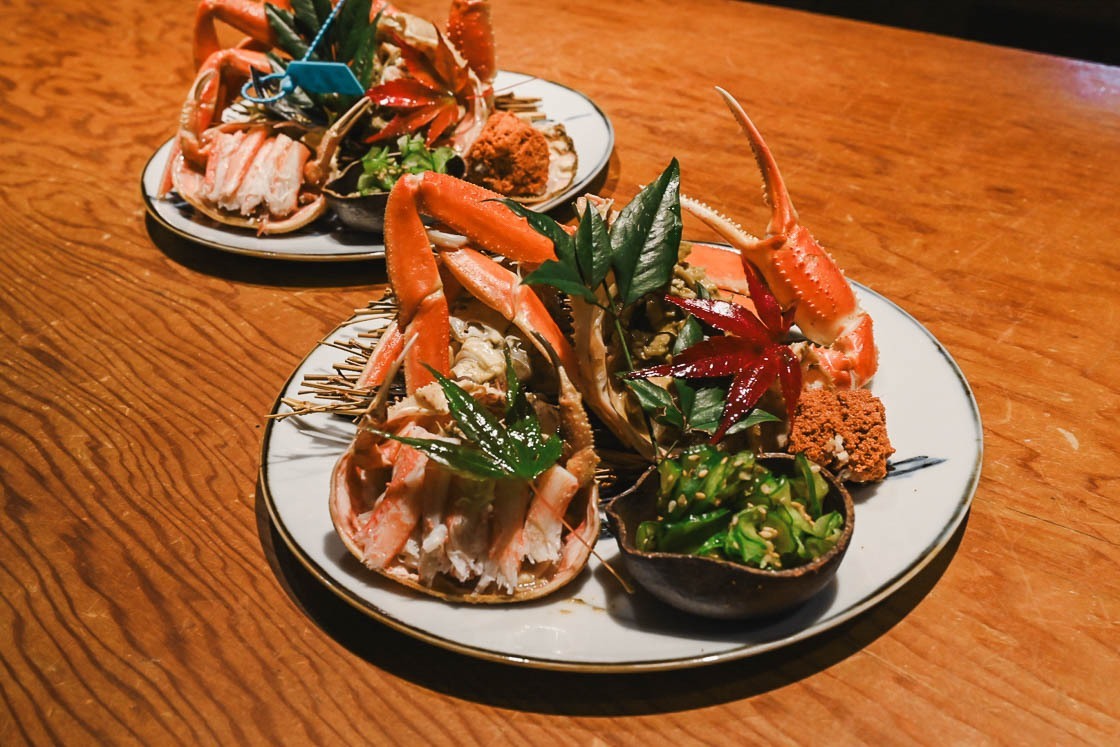
Natural beauty in every season - Different faces in spring, summer, autumn, and winter
In spring, beautiful cherry blossoms bloom, fresh greenery sprouts, and in summer, deep greens are vivid to the eye. In autumn, the mountains are tinged with autumn leaves, and in winter, snowy landscapes create a magical atmosphere. The area surrounding the hot spring resort is dotted with walking trails and other spots where visitors can enjoy the beauty of nature in each of the four seasons. In particular, the sakura cherry blossoms and autumn foliage are breathtakingly beautiful. It is recommended to enjoy nature in combination with hot springs. Since many of the roads around Yamashiro Onsen are flat, walking or renting a bicycle is the best way to get around the area.
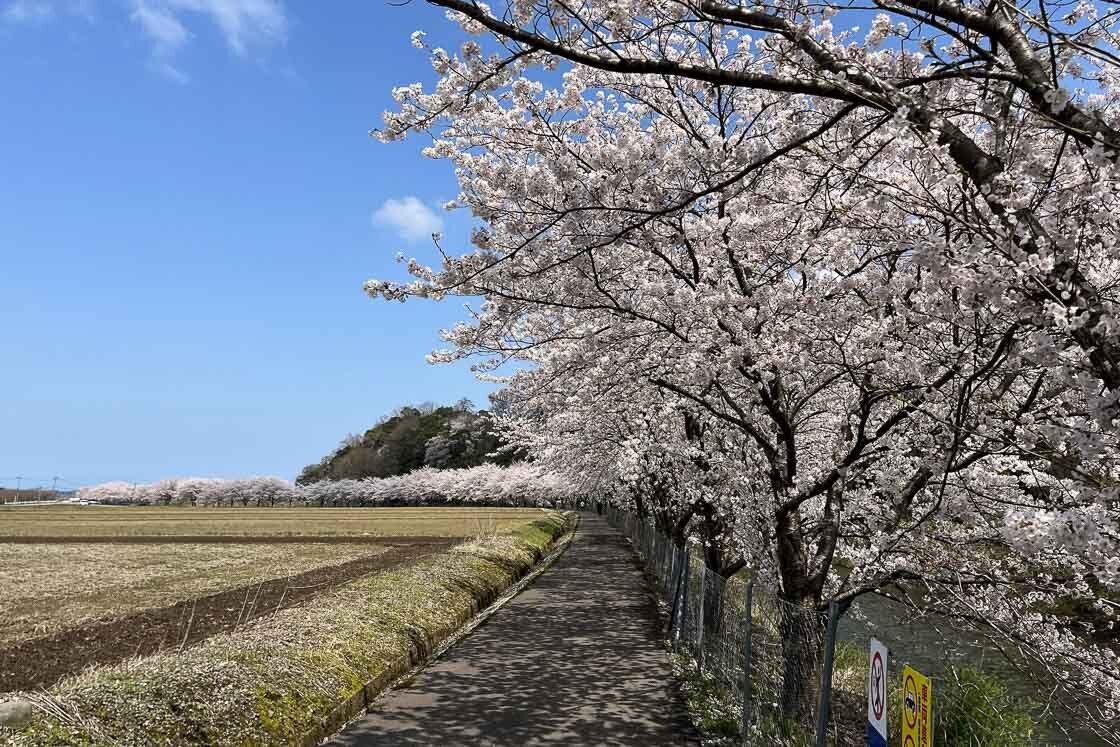
Delicacies from the Sea of Japan and the tastes of Kaga - A gastronomic experience
One of the pleasures of staying at Yamashiro Onsen is the food. Dishes using fresh seafood caught in the Sea of Japan are full of the original flavor of the ingredients. In particular, crab, the king of winter delicacies, is in season from November to March and can be enjoyed in a variety of ways, including boiled crab, grilled crab, and crab hot pot. Its rich flavor and delicate meat are truly exceptional. Visitors can also taste fresh vegetables from the Kaga region and traditional local cuisine. Kaiseki cuisine, which uses an abundance of local ingredients, is a feast for the eyes and the palate. The memories of your trip will be even deeper if you savor them with a glass of Kaga's locally brewed sake. The hot crab dishes will be a special treat for your body warmed by the hot spring.
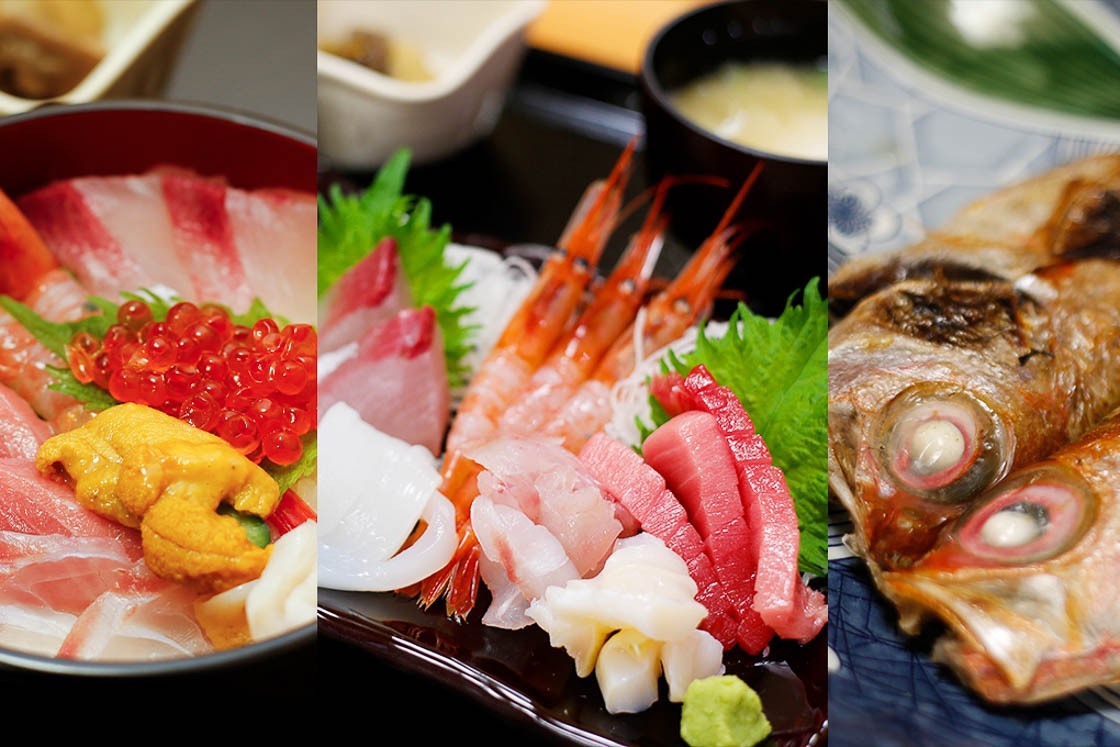
Humanity in the village of hot springs - The essence of Yamashiro Onsen's attractiveness
The charm of Yamashiro Onsen lies not only in its beautiful nature, high quality hot springs, and rich culture. Yamashiro Onsen welcomes you with the warm and attentive human touch that has been nurtured through its long history as a therapeutic hot spring resort. The spirit of cordial welcome is alive and well in every ryokan, souvenir store, and restaurant in the hot spring resort district, where visitors are warmly welcomed and made to feel at home. A courteous greeting at the entrance, careful attention to detail in the guest rooms, and a warm word of welcome at meals. The warm hearts of the people of Yamashiro, cultivated over many years of history, embrace visitors.
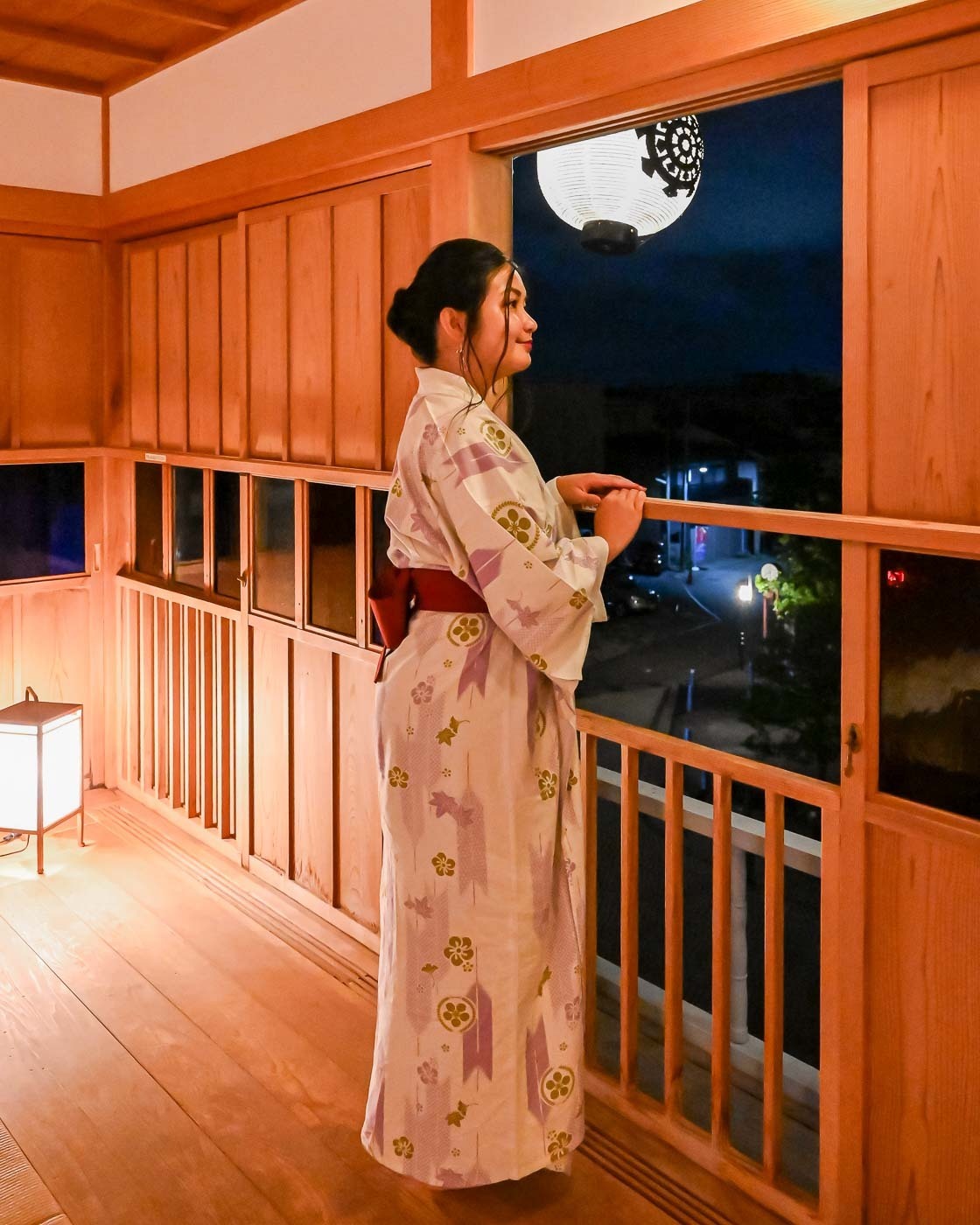
Invitation to Yamashiro Onsen - Access and neighborhood information
With the opening of Kaga Onsen Station on the Shinkansen bullet train line, Yamashiro Onsen is now more conveniently accessible from the city, and we invite you to use Yamashiro Onsen as a base for your Hokuriku travels and enjoy the culture and nature of the hot spring resort!
By train: The JR Hokuriku Shinkansen has been extended to Kaga Onsen Station in 2024, making it possible to reach Yamashiro Onsen in just 2 hours and 40 minutes from Tokyo Station by a single train. It is also only 16 minutes away from Kanazawa, the center city of the Hokuriku region. It also takes only 1 hour and 40 minutes from Kyoto and 2 hours from Osaka.
Many ryokan in Yamashiro-Onsen offer a pick-up service from JR Kaga Onsen Station. We recommend that you check with the ryokan in advance before using the service.
Komatsu Airport, the air gateway to Hokuriku, is also about 30 minutes away by rental car or taxi.
Yamashiro Onsen is also included in the CANBUS route that takes you to major sightseeing spots in Kaga.
By car: It takes about 15 minutes from the Kaga Interchange on the Hokuriku Expressway. Many ryokans have parking lots, so access by private car is also convenient.
By plane: Approximately 40 minutes from Komatsu Airport by taxi.

Sightseeing spots in the surrounding area
There are many sightseeing spots in the vicinity of Yamashiro Onsen where visitors can experience nature and culture, including Eiheiji Temple (40 minutes by car) and the Kutani Pottery Museum (12 minutes by car). Eiheiji Temple is the head temple of the Soto sect (Soto-shu) of Zen Buddhism and was founded more than 750 years ago. It is especially popular among tourists from Europe and the United States, as it offers a Zen meditation experience. At the Kutani Pottery Museum, visitors can experience the history and beauty of colorful Kutani pottery. Tojimbo, with its precipitous cliffs carved by the rough waves of the Sea of Japan, is also nearby. We recommend that you rent a car at JR Kaga Onsen Station (35 minutes by car) and stay not only one night but also two or three nights at Yamashiro Onsen to fully enjoy a trip to the hidden sights of Hokuriku.
A hot spring village that transcends time and heals people's hearts and minds
Yamashiro Onsen is a hot spring resort that has healed people's bodies and minds throughout its long history. From the Nara period (710-794) through the Edo period (1603-1868), when Kaga was the largest city in Japan, to the present day, the hot spring water has never ceased to flow, attracting many people. Yamashiro Onsen offers a rich natural environment, a spa town steeped in history and culture, and the warm hospitality of its people. Yamashiro Onsen will give you a sense of peace and excitement, and remind you of the original landscape of Japan. Leave the hustle and bustle of the city behind you, and let the quiet time pass you by, and surrender yourself to the profound charm of Yamashiro Onsen.
Discover more
- Yamashiro Onsen - Official website.
- Yunomachi Diary - Official instagram account of Yamashiro Onsen.
